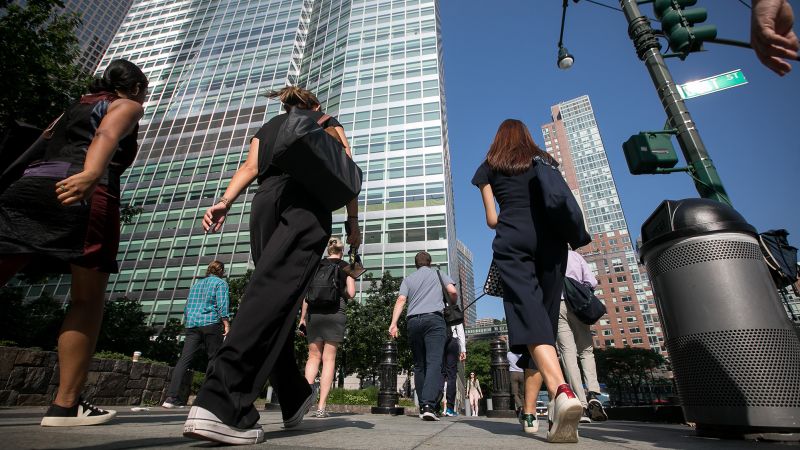Goldman Sachs is increasingly confident that the US economy will stick the soft landing that many thought was nearly impossible to pull off.
In a research report published Monday night, Goldman Sachs lowered its estimated chance of a US recession over the next 12 months to just 15%.
That’s basically in-line with the historical average chance of a recession on any given year. It’s also down from the Wall Street bank’s prior forecast of 20% and well below its 35% projection in March as the banking crisis erupted.
The report, titled “Soft Landing Summer,” pointed to a series of encouraging economic indicators on inflation and the jobs market that suggest the US economy will avoid the Federal Reserve-fueled recession that many feared.
Tamping down inflation without throwing the economy into recession is what’s called a “soft landing,” something the Fed has only achieved once in the past 60 years.
“We strongly disagree with the notion that a growing drag from the ‘long and variable lags’ of monetary policy will push the economy toward recession,” Jan Hatzius, Goldman’s chief US economist, wrote in the report. “In fact, we think the drag from monetary policy tightening will continue to diminish before vanishing entirely by early 2024.”
Hatzius added that Goldman Sachs is increasingly confident that the Fed is “done” raising interest rates as unemployment rises, wages slow and inflation eases.
Wall Street economists have been forced to repeatedly postpone or even cancel their recession forecasts as the economy proves resilient.
Goldman Sachs says it is “substantially more optimistic” than most forecasters. The Bloomberg consensus of economists is still calling for a 60% chance of a recession.
Hatzius wrote that GDP tracking tools like the Atlanta Fed’s GDPNow model, which is calling for booming growth of 5.6% in the third quarter, likely “overstates the economy’s true momentum.” He added that growth will likely cool off in the fourth quarter as student loan payments resume and the mortgage rate spike hurts housing.
“But we expect the slowdown to be shallow and short-lived,” Hatzius said.
Goldman Sachs pointed to “solid” job growth and rising real (inflation-adjusted) wages that should allow real disposable income to “reaccelerate” next year.
In other words, paychecks will grow faster than prices, giving consumers the ability to keep spending. That’s crucial in an economy where consumer spending is the main driver of growth.
The August jobs report, released late last week, showed that hiring remains solid, though it has slowed from the blockbuster pace of earlier in the post-pandemic recovery.
And while the unemployment rate jumped from 3.5% to 3.8% in August, Hatzius said Goldman Sachs is “unconcerned” by the increase because it was “entirely driven” by an increase in the supply of people looking for work.
“The August jobs report couldn’t be much better,” Moody’s Analytics chief economist Mark Zandi wrote Friday on X, formerly known as Twitter. “The report has soft landing written all over it.”
Read the full article here










